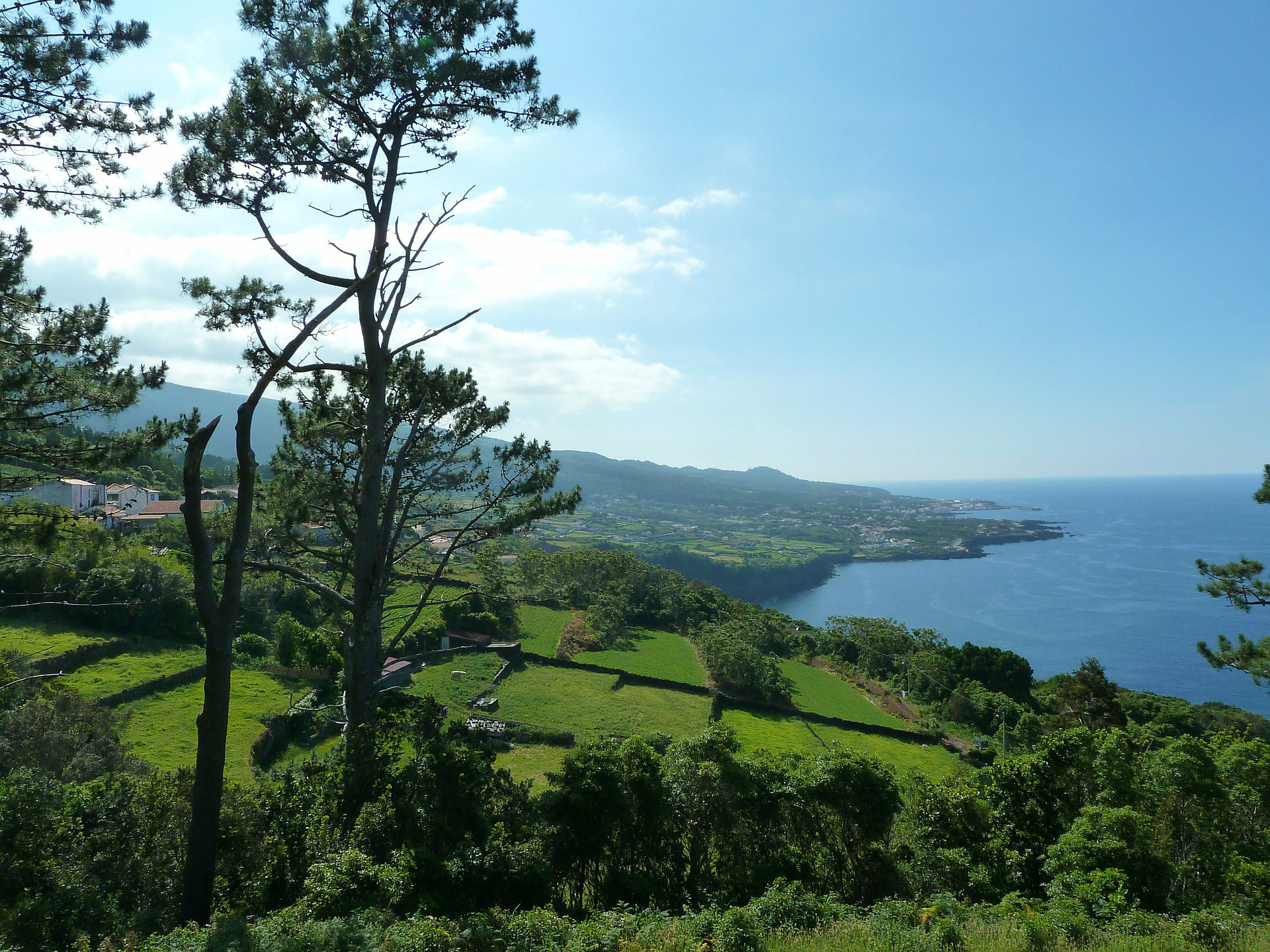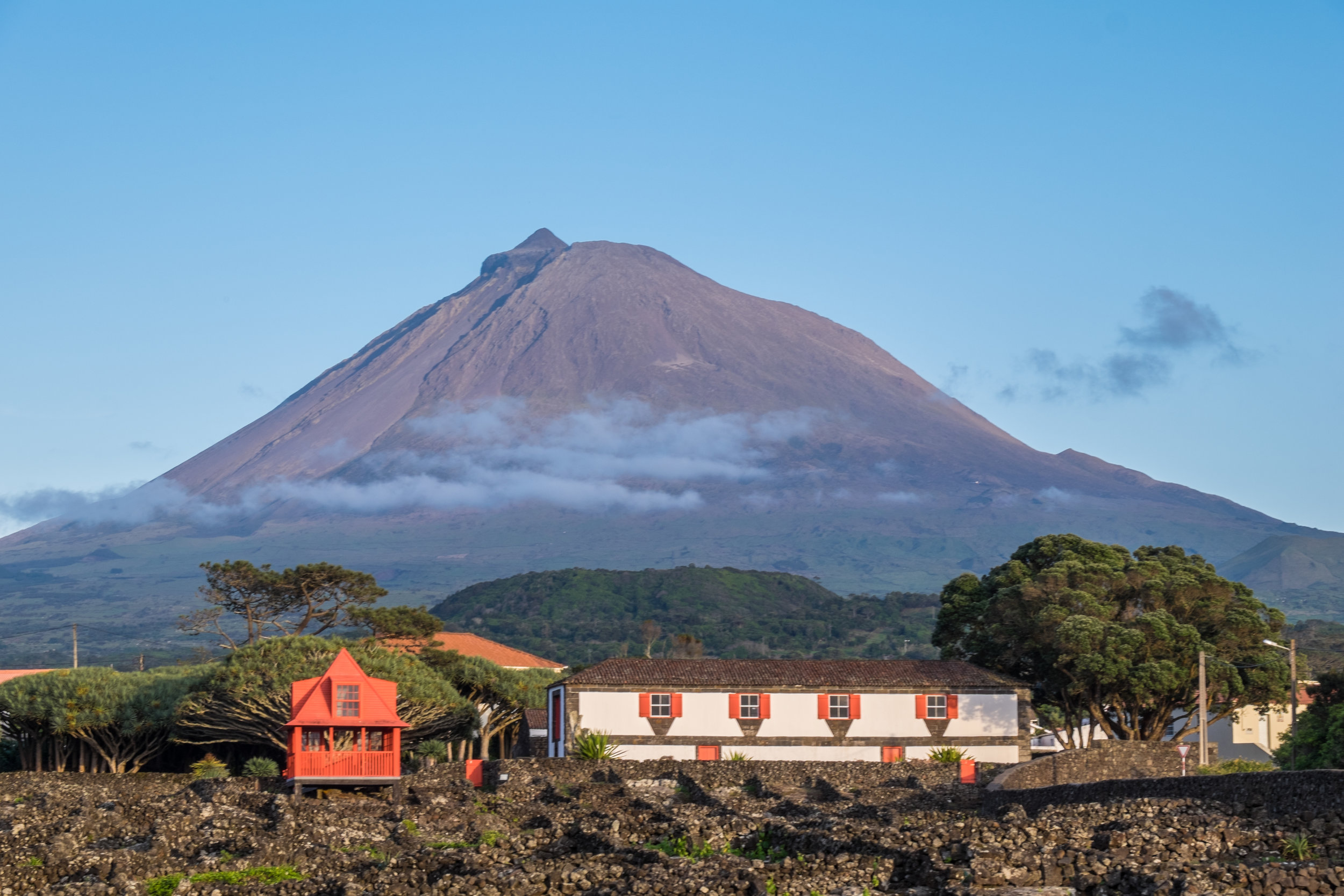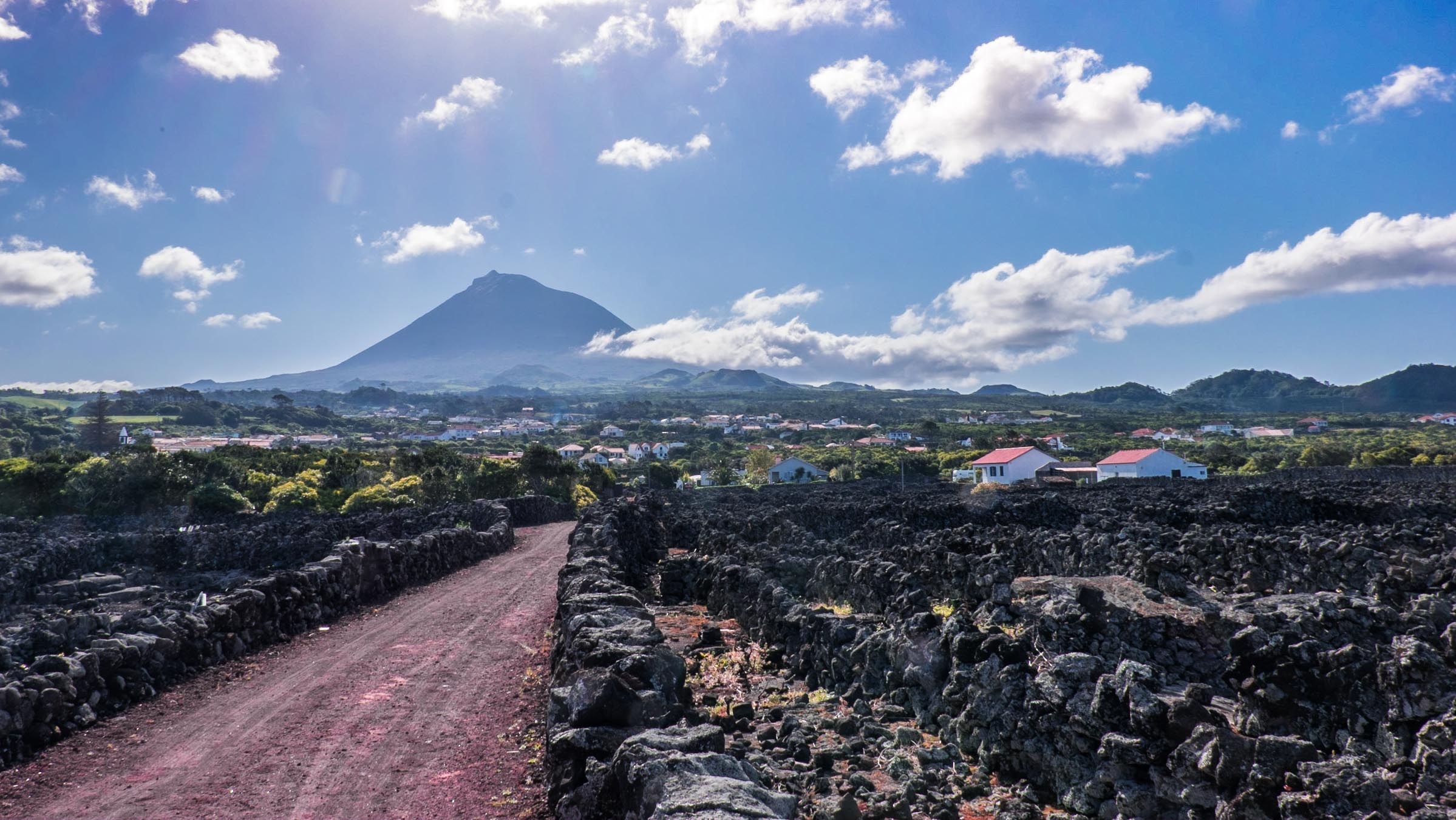
PORTUGAL
PICO, AZORES
The Azores is an autonomous region of Portugal consisting of a nine-island, active volcanic archipelago between 37º and 39º N latitude, about the same as Lisbon and Atlantic City, New Jersey. Pico is the youngest island in the Azores, just 300,000 years above the sea, and the one with the most area under vine covered by the DOP Pico. The formation of the island along a roughly east to west fault line is clear: there’s a remarkably evenly spaced string of volcanic cones that punctuate the land east of Pico Mountain in a near straight line.
In addition to being a highly active zone of volcanism, the complex triple junction of moving tectonic plates and associated rifts that underlies the Azores, is also one of the most seismically energetic places on earth. Virtually everyday there is a minor earthquake somewhere around the islands, and more occasionally a major one. Statistically there has been a volcanic eruption in the Azores every 50 years, and since the last one occurred in 1957 on Faial, the archipelago is scheduled for another volcanic outburst anytime.
Out in the middle of the Atlantic, the ocean shows all its unmitigated mightiness, and the cool, wet, and windy climate wields the most influence over wine style. Regardless of variety, when rendered in dry, fresh versions, young whites from Pico are tangy and electric, variations on sweet green herbs soaked in brine with citrus in myriad shades liberally sprinkled with sea salt. They have a charm and beauty of their own. But the traditional-style <vinhos licorosos> are the most original. Made in dry (<seco>) and sweet (<doce>) versions, occasionally fortified, these wines belong in museums along with other 16th century volcanic relics like Madeira or Tokaji Szamorodni to protect a drinking experience that is in danger of extinction.




